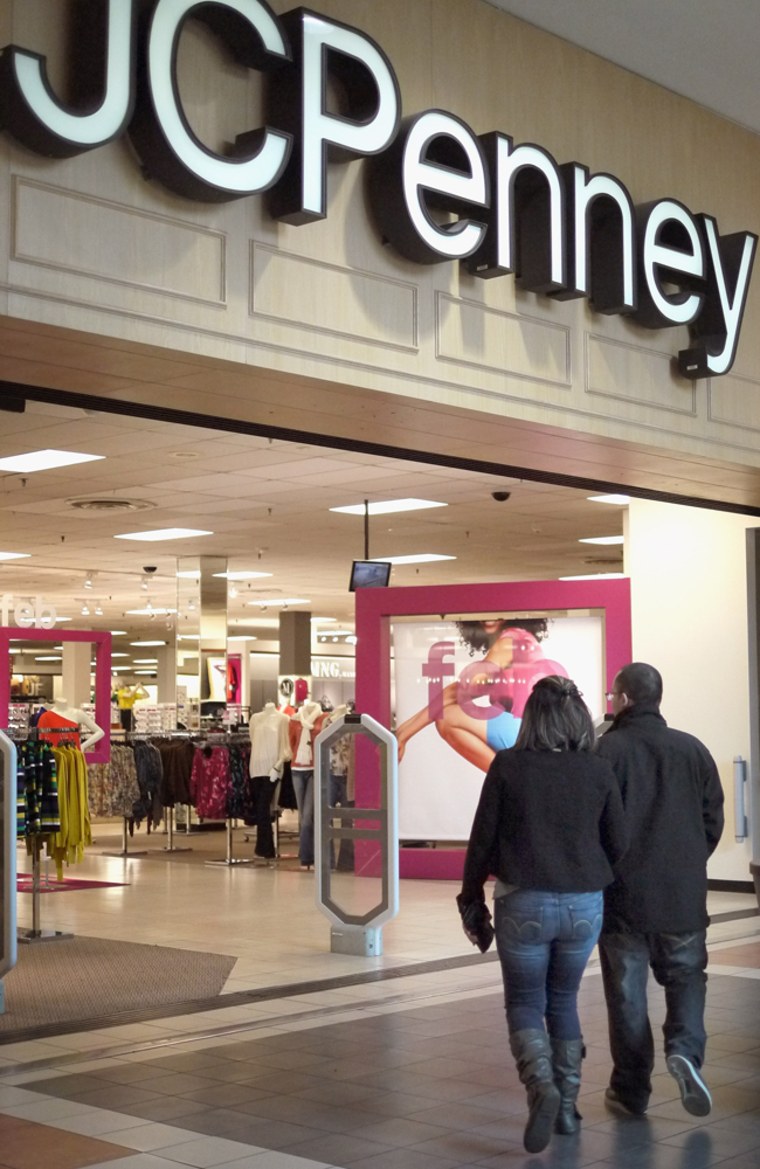If the magic can work for Apple, maybe it can work for J.C. Penney.
The struggling retailer, which last year recruited Apple retail guru Ron Johnson as its new chief executive, is moving forward with an aggressive plan to "reinvent jcpenney store experience," shifting away from what a company press release described as "the confusing and seemingly endless racks common in department stores today."
Penney executives hope to lure more shoppers and get them to spend more by giving them an Apple-esque shopping experience, letting them play with the merchandise and grill hip product experts for detailed information.
Few expect the transformation to be easy.
"There's a lot of low-hanging fruit, a lot of improvement they can make," said Erika Maschmeyer, senior research analyst for Robert W. Baird & Co. "That said, I don't think it's a magic pill, and I don't think it'll happen overnight."
Penney managed to grow same-store sales 0.3 percent in December but posted a fourth-quarter loss and said it will not announce monthly same-store sales figures going forward.
Penney’s ambitious plan is to create a central hub for services surrounded by easily navigable merchandise departments in each of its 1,100 stores. The company wants to "make our customers love shopping again," spokeswoman Kate Coultas said.
The brand already announced a radical pricing shift designed to wean consumers off constant promotions, and its four-year plan to reinvent its stores is equally grand in scope.
Penney's new vision, announced in January, centers around the concept of "The Street," up to 100 branded stores-within-a-store.
In a recent research note, Maschmeyer noted that a bright spot for J.C. Penney is its in-store Sephora beauty boutiques. Sephora, and the branded in-store boutiques for Spanish cheap-chic brand Mango that Penney added in 2010, are popular with shoppers, Coultas said.
"[C]ustomers have shown us that they respond strongly to curated assortments presented in a compelling shop environment," she said.
"This is a chance to draw traffic and create interest," Maschmeyer said.
One expert said J.C. Penney is taking a risk creating these in-store "brand shops" while overhauling its own brand image at the same time. "When you capitulate your brand voice to be co-dependent on the likes of other brands, you're yielding a lot of your brand equity," said Brian Dyches, international president of the Retail Design Institute.
Part of what made Johnson's Apple store design work so well was its unrelenting focus on the Apple brand. The store sells other brands of software, peripherals and the like, but they are discreetly tucked away. The spotlight is always on Apple’s products.
Perhaps the biggest hurdle to the plan’s success is real estate. Apple, which launched its first stores in 2001, targeted prime locations as it expanded, such as New York City's Grand Central Terminal. Penney is saddled with hundreds of legacy stores in malls that peaked at the end of the 20th century and have been on the decline ever since.
"Legacy real estate is already creating challenges in translating vision to reality due to the simple fact that JCP has both 'good' and 'bad' locations," Credit Suisse research analyst Michael Exstein said in a note. "Thus far, the marketing message has improved, but we worry that it could be overpromising the experience in many of JCP’s 1,100 locations."
Exstein visited two Penney stores within a short drive of each other and created side-by-side photo and descriptive comparisons.
While the newer one was bright and spacious with well-organized merchandise, the older location had haphazard display positioning, poor lighting and a confusing layout. Coultas said the goal for every store is "less clutter, clear pricing and wider aisles to better showcase our merchandise and make everything easier to find." She said Penney is spending nearly $800 million in the current fiscal year alone to overhaul stores.
The new Penney stores will be anchored by something the company is calling "The Square," a service-based hub the company promises "will merge the physical and digital worlds."
Experts are skeptical. "The issue they're going to have is programming and content," Dyches said. "Most retailers have failed at executing content for digital signage."
For now, the company isn't saying precisely what concept will look like when it begins rolling out next year.
The idea of a central service center does have precedent for the brand, given the popularity of its in-store Sephora boutiques. It's possible the retailer could use this as a springboard, relocating Sephora to the central "square" and adding the kind of makeover services found at standalone Sephoras.
Some Penney locations already have beauty salons, so grouping them with expanded beauty services would be a logical fit. Maschmeyer also points out that some department stores have cafes or other dining options, which would be another direction in which Penney's could take its service-center concept.
Despite the challenges, analysts tend to agree that if anybody can pull this off, it's Johnson, who built the Apple store chain from scratch after previous experience at Target.
"We are currently giving Ron Johnson and team the benefit of the doubt," Exstein said in his note.
